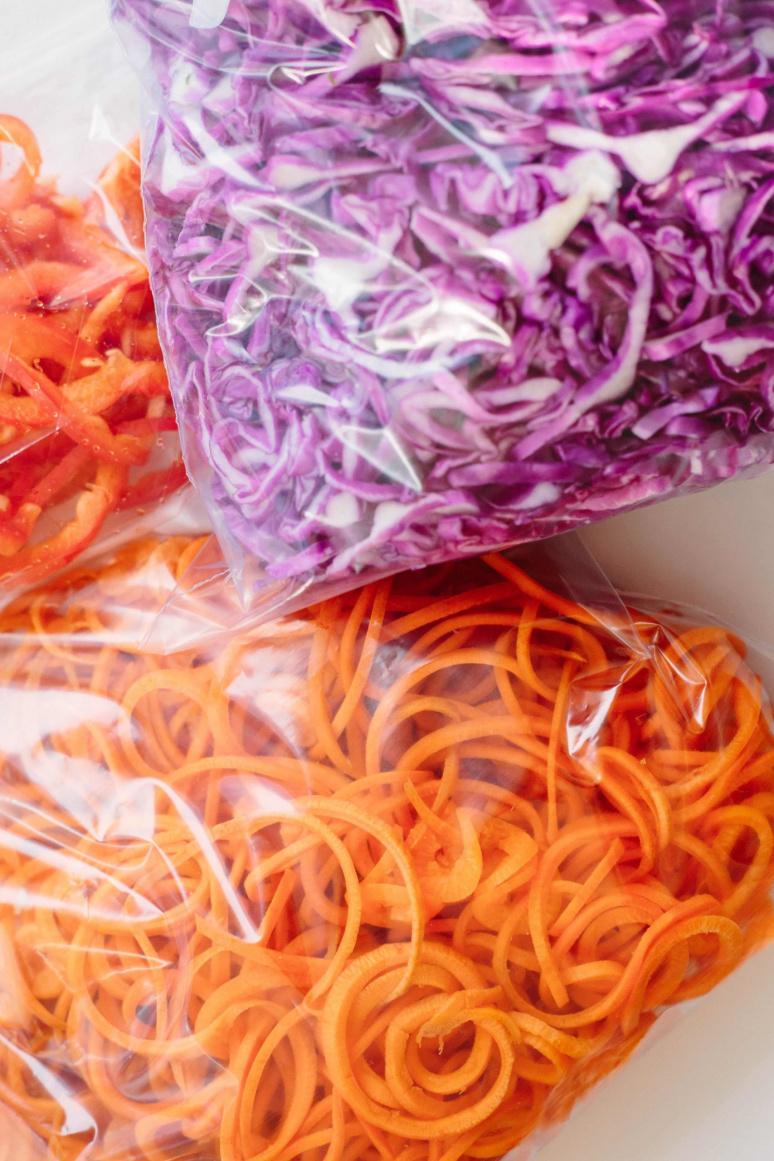
Find everything you need to know about spiralized meal prep on this page! On this page, you’ll find information on:
- Spiralizing for Meal Prep
- Spiralized Meals That Work Best for Meal Prep
- Meal Prepping with Zucchini Noodles
- Some Meal Prep-Friendly Recipes to Get You Started
Spiralizing for Meal Prep
Meal prepping with spiralized veggies is a great way to commit to a healthy week and get your veggies in!
Here are the general guidelines for the most common spiralizable veggies, followed by more information on meal prepping with spiralized zucchini (it’s a bit trickier!):
Apple
Raw Storage: Apples instantly brown in the refrigerator, so seal tightly in a Ziploc or airtight container (try to avoid letting much air in), but only expect a couple days in the refrigerator.
Beet
Raw Storage: Seal in an airtight container, lasts up to 5 days in the refrigerator, can be frozen.
Bell pepper
Raw Storage: Seal in an airtight container, lasts up to 5 days in the refrigerator.
Broccoli
Raw Storage: Seal in an airtight container, lasts up to 5 days in the refrigerator, can be frozen.
Butternut Squash
Raw Storage: Seal in an airtight container, lasts up to 5 days in the refrigerator, can be frozen.
Cabbage
Raw Storage: Lasts up to 1 week, can be frozen.
Carrot
Raw Storage: Seal in an airtight container, lasts up to 1.5 weeks in the refrigerator, can be frozen.
Celeriac
Raw Storage: Seal in an airtight container, lasts up to 5 days in the refrigerator, can be frozen.
Chayote
Raw Storage: Seal in an airtight container over paper towels or napkins, lasts up to 5 days in the refrigerator, shouldn’t be frozen.
Cucumber
Raw Storage: Seal in an airtight container over paper towels or napkins, lasts up to 2 days in the refrigerator, shouldn’t be frozen.
Daikon
Raw Storage: Seal in an airtight container, lasts up to 10 days in the refrigerator, shouldn’t be frozen.
Jicama
Raw Storage: Seal in an airtight container, lasts up to 7 days in the refrigerator, shouldn’t be frozen.
Kohlrabi
Raw Storage: Seal in an airtight container, lasts up to 5 days in the refrigerator, can be frozen.
Onion
Raw Storage: Use as you would normally with a sliced onion.
Parsnip
Raw Storage: Seal in an airtight container, lasts up to 10 days in the refrigerator, can be frozen.
Pear
Raw Storage: Pears instantly brown in the refrigerator, so seal tightly in a Ziploc or airtight container (try to avoid letting much air in), but only expect a couple days in the refrigerator.
PLantain
Raw Storage: Seal in an airtight container, lasts up to 4 days in the refrigerator, can be frozen.
Rutabaga
Raw Storage: Seal in an airtight container, lasts up to 7 days in the refrigerator, can be frozen.
Sweet potato
Raw Storage: Seal in a bowl covered with ice water, up to 2 days, can be frozen.
Turnip
Raw Storage: Seal in an airtight container, lasts up to 7 days in the refrigerator, can be frozen.
White Potato
Raw Storage: Seal in a bowl covered with water, up to 2 days (to avoid browning), can be frozen.
Zucchini & Summer Squash
Storage: Seal in an airtight container, lasts up to 5 days in the refrigerator, shouldn’t be frozen.
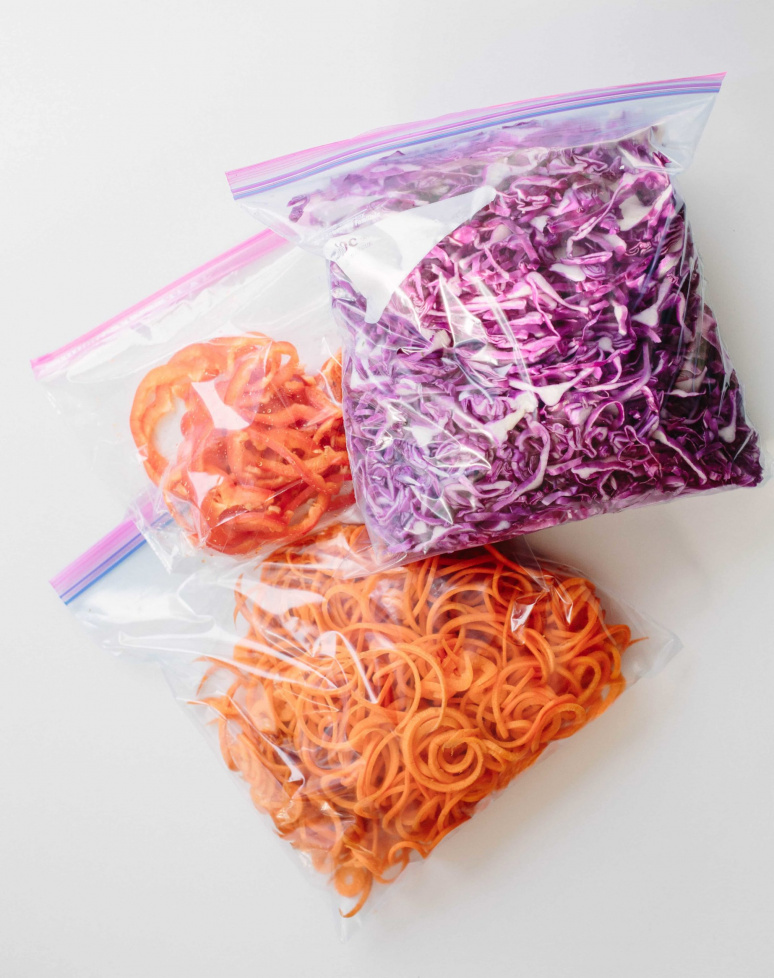
Spiralized Meals that Work Best for Meal Prep
If you’d like to make the complete meal in advance, these types of meals save the best:
- “Raw”/cold dishes: If the dish requires no cooking or is better served chilled, it’s a win-win!
- Spiralized rice: since rice dishes tend to not be made with vegetables that release excess moisture, they’re perfect for prepping completely in advance and reheating. They work well in the freezer, especially!
- Non-zucchini noodle dishes with ragu-type sauces: If you’re making a bolognese over sweet potato noodles, this can easily be reheated and enjoyed. However, if you’re making a zucchini noodle dish with a bolognese, the water content in the zucchini noodles will thin out the bolognese and take away from its originally delicious flavor.
- Example: Lamb Ragu over Celeriac Noodles
- Non-zucchini noodle dishes with sauces: Similar to the ragu-type sauces tip above, any type of sauce can be used with spiralized vegetables and can be reheated for lunch.
- Dishes with no sauce: If your recipe doesn’t call for a heavy sauce, that’s perfect – it will reheat well. Bonus points for recipes with cheese – the heated cheese will melt nicely into the noodles. This works with zucchini noodles!
- Example: Zucchini Pasta Primavera
- Example: One Pot Basque Chicken with Red Potato Noodles
- Pesto pastas: Pesto sauces work well with all vegetables and reheat well. Actually, the olive oil in the pesto works to our advantage with zucchini noodles. Throw in some kale, spinach or another vegetable that will absorb excess moisture, and you’ve got a pesto pasta, fit for lunch!
- Example: Beet Noodles and Kale with Pesto
- Noodle dishes or soups that don’t call for zucchini noodles: If you make a big batch of a spiralized noodle bowl or soup, you can definitely reheat it for lunch – unless it uses zucchini noodles. I don’t recommend this, since zucchini noodles will again thin out the soup and make it less flavorful altogether. However, it’s total personal preference, at the end of the day.
- Wraps and sandwiches: any noodle, any ingredient – collard green wraps (or any type of sandwich wraps) work brilliantly! Just wrap tightly in tinfoil or paper and secure with tape when packing for lunch.
- Spiralized salads: As long as there aren’t any fruit noodles in there, spiralized salads generally work well if they’re pre-made, as long as they don’t include zucchini or cucumber noodles (which can cause a soggy salad!)
- Casseroles: If you eat hearty lunches, then you’re in luck: non-zucchini noodle casseroles work fabulously when reheated.
Meal Prepping with Spiralized Zucchini
Please note, spiralized zucchini should not be frozen. When you go to defrost it, it will wilt and become a mushy mess.
It can be tricky to prepare a zucchini noodle dish in advance, due to the vegetable’s high water content (the longer the zucchini sits in a sauce, the more moisture releases and the more watery/mushy the dish will get). This applies for cucumbers as well.
If you’re saving leftovers from a spiralized dish that includes zucchini noodles, here are a few go-to tips:
1. Reserve Some Extra Sauce While Cooking
The best way to make a recipe and save leftovers for the next day is by portioning out some of the sauce, placing it in a container and putting it in the fridge to save. Then, if you’d like to make this for lunch or dinner the next day, just heat up the reserved sauce, cook the zucchini noodles, and pour the sauce over the zucchini noodles.
For example, you could make a big batch of my Gluten-Free Turkey Meatballs with Zucchini Noodles, while reserving a serving of the tomato sauce and meatballs, and then reheat the sauce & meatballs. While the sauce and meatballs heat up, cook the zucchini noodles in a skillet and then pour the sauce and meatballs over the zucchini, once ready.
2. Make it Raw
I have many recipes for yummy meals that don’t require cooking of zucchini noodles. These can be saved in the refrigerator for later and don’t require reheating and therefore, the noodles won’t release too much water. For example, my Avocado and Tomato Zucchini Noodle Salad with Basil Vinaigrette.
3. Bring seasonings if you’re having a soup
If you just made a delicious zucchini noodle soup, like the Minestrone from Inspiralize Everything or this Bacon and White Bean Zoodle Soup, here’s a tip: pack extra seasonings. As the zucchini sits in the soup, its moisture will dilute the broth, making it less flavorful. For example, if you’re making my Vegan Zucchini Noodle Ramen, add an extra dash of soy sauce before serving. Other seasonings that can be appropriate are salt, pepper, spices, hot sauce, etc.
Some meal-prep friendly spiralized recipes to get you started…
- Mom’s Chicken over Spiralized Root Vegetables
- One Pot Vegan Fajitas with Spiralized Sweet Potato Rice
- Vegan Buffalo Cauliflower with Spiralized Sweet Potato Noodles
- Thai Quinoa and Zucchini Noodle Salad
- Italian Zucchini Pasta Salad
- Spiralized Golden Beet Arroz Con Pollo
- Tahini Chicken and Carrot Noodle Bowl
- Beef Picadillo with Spiralized Green Bell Peppers
- Spiralized Sweet Potato, White Bean and Kale Bake
- Winter Kale Bowl with Spiralized Beets, Goat Cheese and Walnuts
- Slow Cooker Chicken Burrito Bowls with Spiralized Sweet Potato Rice
- Spicy Sausage and Kale Soup with Carrot Noodles
Meal Planning
If you’d like us to do the work for you, we’ve got you covered! Check out our Spiralized Meal Plans, here.
Happy, healthy planning!


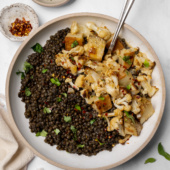



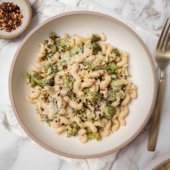
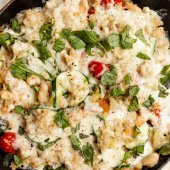
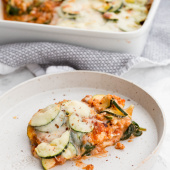
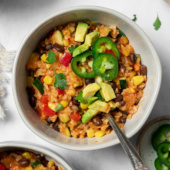
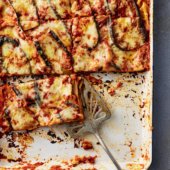
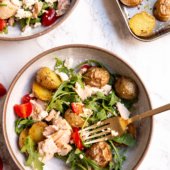
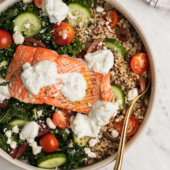
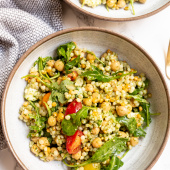



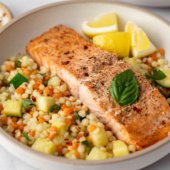
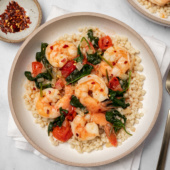
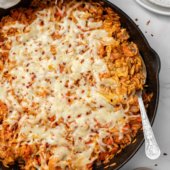


















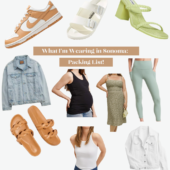








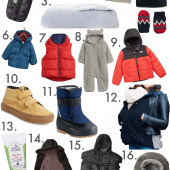
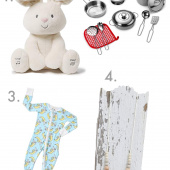
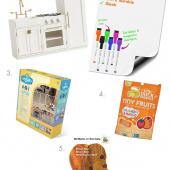




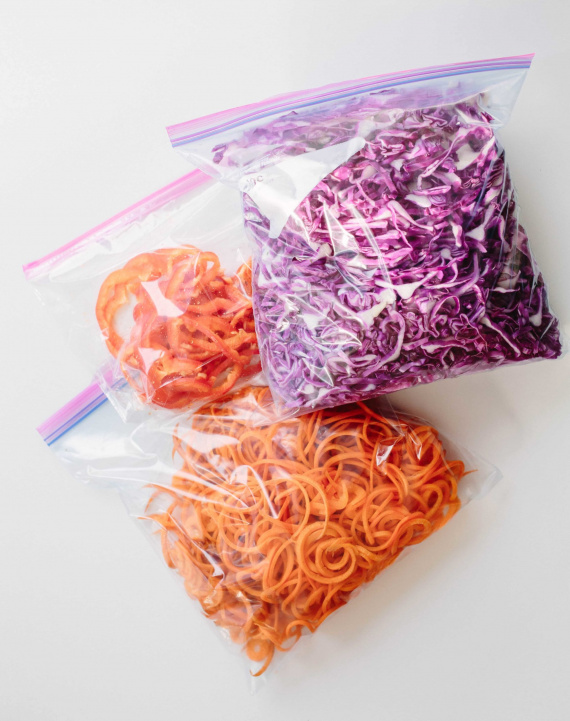

comments